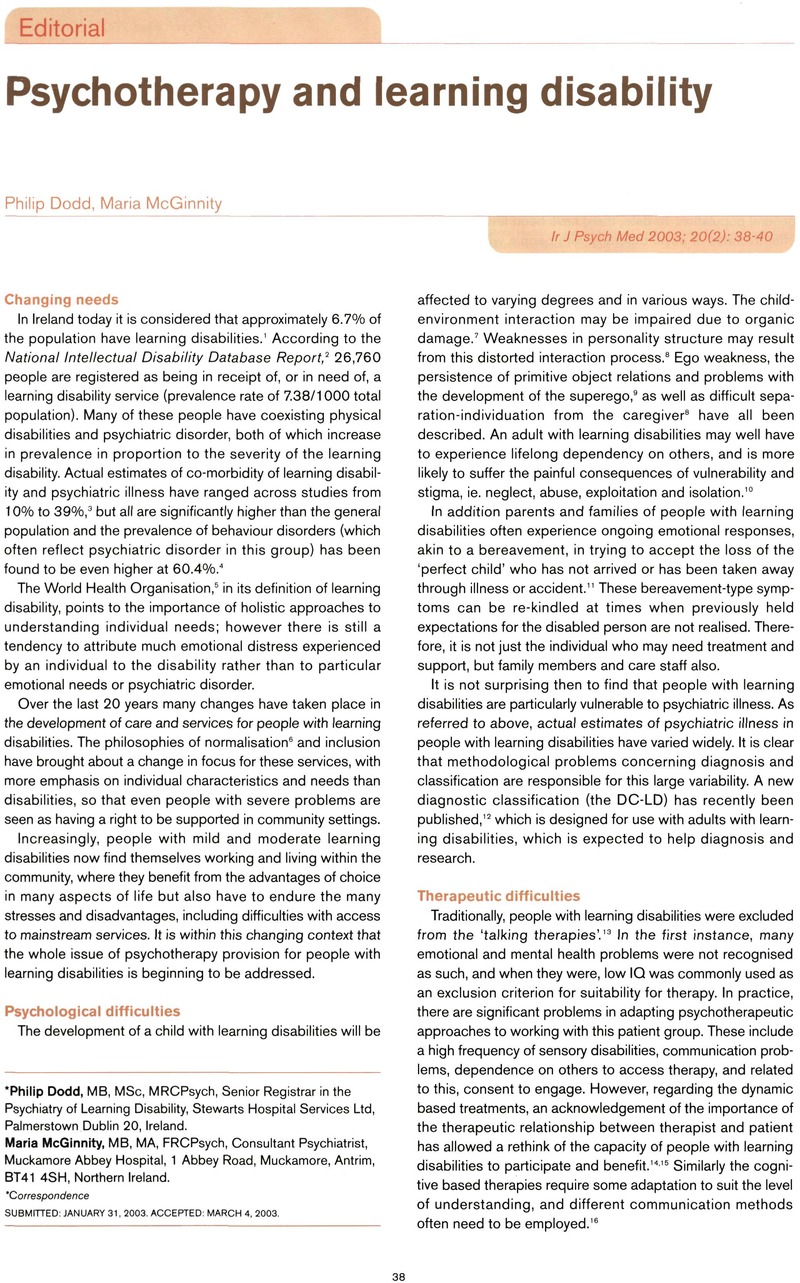Crossref Citations
This article has been cited by the following publications. This list is generated based on data provided by Crossref.
Whitehouse, Richard M.
Tudway, Jeremy A.
Look, Roger
and
Kroese, Biza Stenfert
2006.
Adapting Individual Psychotherapy for Adults with Intellectual Disabilities: A Comparative Review of the Cognitive–Behavioural and Psychodynamic Literature.
Journal of Applied Research in Intellectual Disabilities,
Vol. 19,
Issue. 1,
p.
55.
Alim, Nadja
Paschos, Dimitrios
and
Hearn, Michael
2014.
Handbook of Psychopathology in Intellectual Disability.
p.
23.
Beaumont, Renae
Lemelman, Amy
Schild, Jennifer
and
Tang, Karen
2019.
Handbook of Intellectual Disabilities.
p.
699.



